The Dreyfus affair is even now a searing example of miscarriage of justice. The scandal has never died away, with Why the Dreyfus Affair Matters, by Louis Begley, hitting bookstores in 2009 and The Dreyfus Affair: The Scandal that Tore France in Two, by Piers Paul Read, in 2012. But what actually happened?
Alfred Dreyfus was a Jewish artillery officer who in 1894 was convicted on charges of treason in France. After he was incarcerated and spent four years in a prison in French Guiana, evidence of his innocence was revealed and caused one of the tensest political dramas in France.
French society was divided, with some supporting Dreyfus and others against him. Emile Zola was a major figure in Dreyfus’ exoneration, and he wrote his essay “J’Accuse” concerning the case.
“I have only one passion, that of the light, in the name of humanity which has suffered so and is entitled to happiness. My ignited protest is nothing more than the cry of my heart”. – Emile Zola, “J’Accuse,” 1898
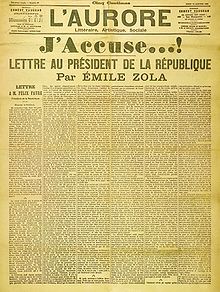
Dreyfus was born in Mulhouse, Alsace, in France in 1859 but moved to Paris with his family after the Franco-Prussian War broke out in 1870. At the age of 18, the young Dreyfus decided upon a military career and enrolled in the elite Parisian military school École Polytechnique, where he received his military training and also studied the sciences. He graduated after three years and was commissioned in the French army as a sub-lieutenant.
He wanted to specialize as an artillery officer so from 1880 to 1882 he took specialized training in the artillery school at Fontainebleau. When he graduated, Dreyfus was assigned to garrison at Le Mans, as part of the 31st Artillery Regiment. In 1885, he was transferred to the First Cavalry Division in Paris with a promotion to lieutenant, and in 1889 to a captain.
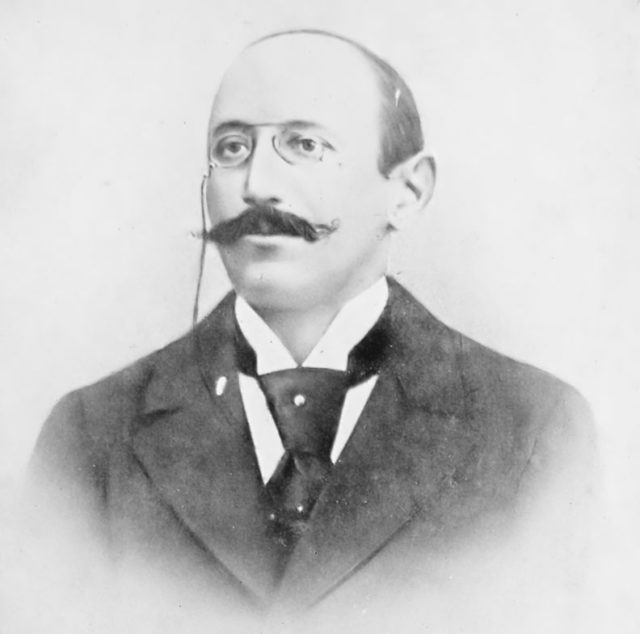
In 1891, three days after his wedding, Dreyfus was admitted to the École Supérieure de Guerre or War College, from where he graduated after two years. Although his friends believed that he did well at the examination at the War College in 1892, Dreyfus received poor marks for the subject of cote d’amour, the mark regarding his “likeability” from General Bonnefond, a member of the panel, which lowered his overall grade. The same scenario repeated with another Jewish candidate, Lieutenant Picard, due to Bonnefond’s belief that “Jews were not desired” on the staff.
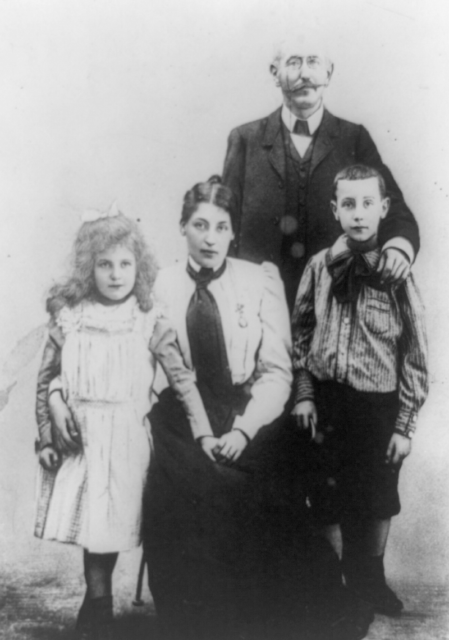
Although the two officers complained about the injustice to the director of the school, General Lebelin de Dionne, he told them that he was powerless to do anything about the matter. It is important to mention that at the time, the appreciation of achievement and talent at the French Army was much stronger than certain prejudices, and there were around 300 Jewish officers, among which 10 were generals. But it appears that within the Fourth Bureau of the General Staff, there were other people than Bonnefond who shared anti-Semitic views.
In 1894, information about recently developed artillery parts in the French Army had been revealed to the Germans, and it could have been passed only by a highly placed spy. Quickly, all suspicion fell upon Dreyfus, and he was arrested for treason. Without any delays, he was convicted in January 1895, publicly stripped of his army rank, and sent to Devil’s Island near French Guiana to serve the sentence of life imprisonment.
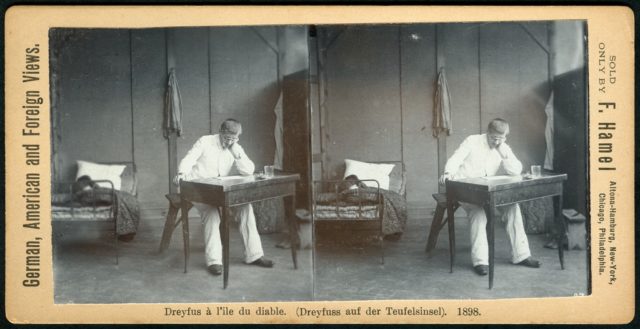
He was formally degraded in Ecole Militaire courtyard. His sword was broken and his buttons and braid cut from his uniform in front of silent ranks of soldiers. There was also a large and loud crowd of observers expressing their support for Dreyfus who cried out that he was innocent and that he remained worthy of service in the Army.
In August 1896, Lt. Colonel Georges Picquart, the new chief of French military intelligence, told his superiors that he found evidence of who leaked the information to the Germans, and it was certainly not Dreyfus, but Major Ferdinand Walsin Esterhazy. After three months, Picquart found himself transferred as far away as possible, to the southern deserts of Tunisia. However, the report quickly reached the media and news about the possible innocence of Dreyfus and the cover-up by the army shook France.
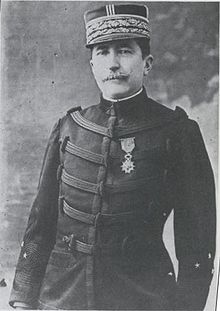
As Dreyfus’s imprisonment was most probably based on anti-Semitism, many people, including artists and intellectuals, actively protested and supported Dreyfus. In 1899, he was finally given a second trial, after which he was once again declared guilty regardless of any evidence. But thanks to public opinion and the active supporters of the innocent Dreyfus, President Émile Loubet offered him a pardon. Even though he was still degraded, he accepted the pardon as he could no longer cope with his imprisonment on Devil’s Island.
He was free but still formally recognized as a traitor to France. He was even kept in house arrest at the home of one of his sisters. In 1906, he was officially vindicated by a military commission, following which he was readmitted to the army and promoted to the rank of major. A week after his vindication, Dreyfus was made a Knight of the Legion of Honour. Soon he got the assignment to command an artillery unit at Vincennes and later another one at Saint-Denis.
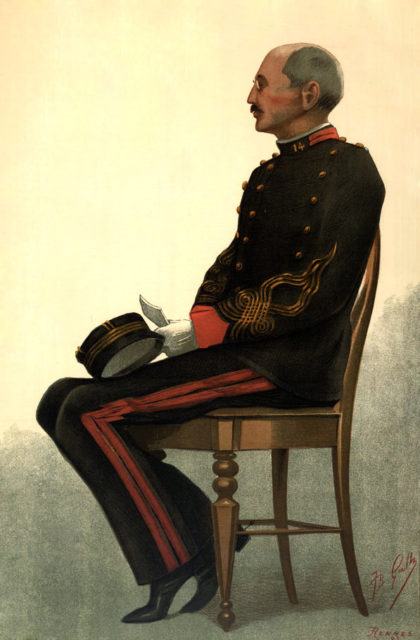
With the outbreak of World War I, Dreyfus re-entered the army as a major of artillery and rose to the rank of lieutenant colonel. He was in his mid-50s and served mainly behind the lines of the Western Front, but in 1917 he also performed duties in the front line on the Chemin des Dames and at Verdun. In November 1918, Dreyfus received a promotion to the rank of Officier de la Légion d’honneur.
Dreyfus died in 1935, on the same date that he was exonerated, 29 years later. He was 75 and was interred in the Cimetière du Montparnasse, Paris.
Dreyfus’s grandchildren donated more than 3,000 documents to the Paris Museum of Jewish Art and History, and in 2006 an online platform was dedicated to the Dreyfus affair so that members of the public could read the documents.
